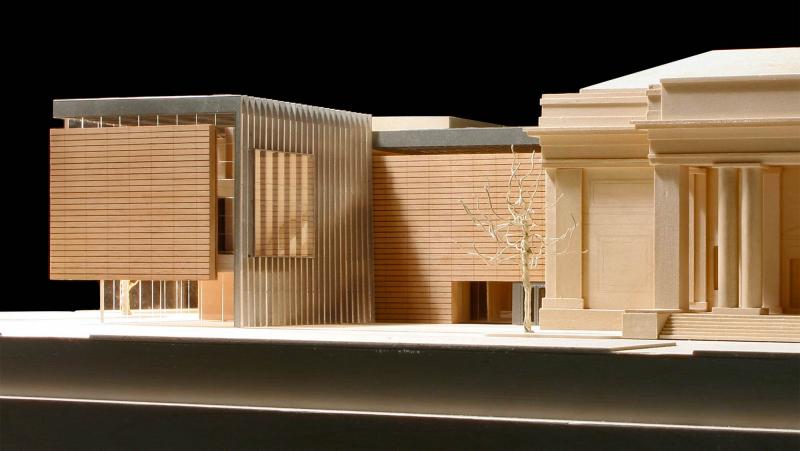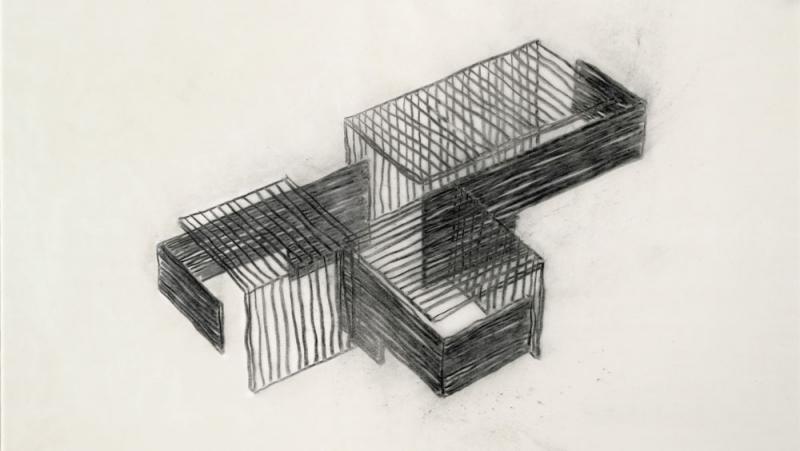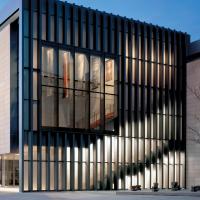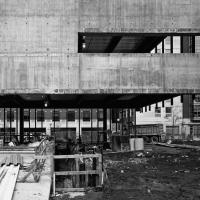-
Name of property current (historical)
-
University of Michigan Museum of Art
-
Entry author
-
Xiandong(Alice) Lin
-
Abstract
-
The Museum of Art at the University of Michigan situates art and concepts as the focal points of both the university campus and the wider community. aim to generate experiences that enhance students comprehension of each other, promote happiness, and establish an equitable future. By presenting displays, organizing educational activities, conducting scholarly investigations, and collaborating with local communities, UMMA is redefining the conventional notion of a university museum.
-
Address
-
525 S State St, Ann Arbor, MI 48109
-
Architect
-
Brad Cloepfil
-
Date (comission)
-
Established 1946
Reconstructed 2004
-
Date (completion)
-
Completed 2009
-
Program/ function
-
Through exhibitions, the University of Michigan Museum of Art served as an academic museum that enriched community understanding.
-
Contractor
-
Allied Works
-
Date (modification, adaptation, renovation)
-
Modified in 2009
-
Style/ distinct features/ cultural reference
-
Beaux-Arts+Modern
Special Features: "275-seat auditorium, object study classrooms, conservation laboratory, accessible main entrance, museum store, ground-level project gallery"
-
Gift giver/ funder/ contributor
-
A recent contribution towards the construction of the building has been made by A. Alfred Taubman, amounting to $4 million.
Nw leadership gifts for the building are $4 million from A. Alfred Taubman
-
Beneficiaries and impact on the community
-
The recent contributions made to our Museum of Art by donors have facilitated the expansion of the University's artistic offerings and have enhanced the means by which we educate and involve the campus and the wider southeastern Michigan community. According to U-M President Mary Sue Coleman, the UMMA's dynamic new space will enhance our dedication to exhibiting stimulating and distinctive artworks for the community.
-
Size/ scale
-
94,500 sf
-
Was the community involved in the process?
-
As the central focus for delivering arts and culture, communities can contribute significantly to the improvement of the museum. Students were permitted to attend classes and group meetings within the building. Local families can now arrange to visit on occasion to acquire knowledge and strengthen their sense of belonging.
-
Q1: What were the motivations of the gift-giver and the implications of the gift for the community ?
-
Donations to the University of Michigan Museum of Art (UMMA) can have a significant impact on the local community. Donors may be motivated by a personal passion for art, a connection to the university, a belief in the educational and societal value of museums, or a desire to leave a legacy. Gifts can also have far-reaching ramifications for the community, such as providing access to art and creative experiences. The gift of artworks to UMMA has the potential to provide educational programs, exhibits, and events that engage and educate the public. It may also have economic benefits such as the attraction of visitors, the generation of money, and the stimulation of local companies. On the other hand, physical maintenance and preservation of the artworks may require financial expenditures in infrastructure, specialized equipment, and knowledgeable personnel. The donation may also result in the expansion of the museum's collection, boosting its status as a cultural institution and contributing to its material resources.
-
Q2: Was there an imposed sense of responsibility or reciprocation in the case study, and who were the parties that were charged with these actions?
-
The research conducted on the University of Michigan Museum of Art (UMMA) suggests that receiving a gift may elicit an implied sense of obligation and reciprocity from the recipient. The donor of an artwork may have certain expectations regarding the maintenance and preservation of the piece, as well as the adherence to any specific conditions or requirements that accompany the contribution. The museum, as the recipient of the donation, bears the responsibility of fulfilling the donor's wishes and safeguarding the artworks' sustainability for the betterment of the community. Reciprocity pertains to the potential for the donor to receive a form of acknowledgement in exchange for their benevolent contribution, such as a tax exemption, acknowledgement in the public domain, or other forms of gratitude. The museum may elect to demonstrate gratitude to the benefactor through expressions of acknowledgement, public recognition of the donor's contribution, and provision of avenues for the donor to engage with or establish connections to the museum's activities.
The UMMA case study concludes that the act of donating artworks may involve responsibilities related to the maintenance and conservation of the pieces, as well as potential monetary benefits, demonstrations of gratitude, and recognition. Accountability for these activities may be attributed to the museum personnel, the institution's administration, or the donor. The act of donating artworks may involve responsibilities related to the maintenance and conservation of the pieces, as well as potential monetary benefits, demonstrations of gratitude, and recognition. Accountability for these activities may be attributed to the museum personnel, the institution's administration, or the gift giver.
-
Q3: Do the design characteristics (i.e material, layout, location) reflect either the culture of the giver, the culture of the receiver, or a mixture of both?
-
The design attributes of a museum may be subject to the influence of various contextual factors, including but not limited to the cultural backgrounds of both the donor and the recipient. The design attributes of the UMMA are presumed to be the result of a confluence of diverse influences. The Maxine and Stuart Frankel Family Wing has been designed to enhance accessibility to common areas at ground level, thereby opening up the museum to the campus and community. This has been achieved by lightening the building envelope. The architectural expansion consists of three separate gallery wings that extend outward from a central atrium. These wings serve to establish exterior areas that facilitate interaction with the surrounding environment. The integration of indigenous rock with see-through and clear layers of framework and glass achieves a harmonious equilibrium between the traditional attributes of the academic institution and the aspiration to establish significant novel associations among art, the environment, and the populace. The design decisions may be influenced by additional contextual variables, such as the geographical location, available resources, and pragmatic considerations. The design elements of a museum may be influenced by various factors, such as the personal preferences, cultural background, and motivations of the gift-giver, as well as the museum's mission, vision, and local context.
-
Bibliography
-
University of Michigan | Museum of Art (UMMA). “University of Michigan | Museum of Art (UMMA),” n.d. https://umma.umich.edu/archive/giving/stories/leadership.html.Mission and History | University of Michigan Museum of Art. “Mission and History | University of Michigan Museum of Art,” n.d. https://umma.umich.edu/mission-and-history.Allied Works. “University of Michigan Museum of Art,” n.d. https://alliedworks.com/projects/university-of-michigan-museum-of-art.Foundation & Government Support | University of Michigan Museum of Art. “Foundation & Government Support | University of Michigan Museum of Art,” n.d. https://umma.umich.edu/foundation-government-support.







